|
| Click on image for China |
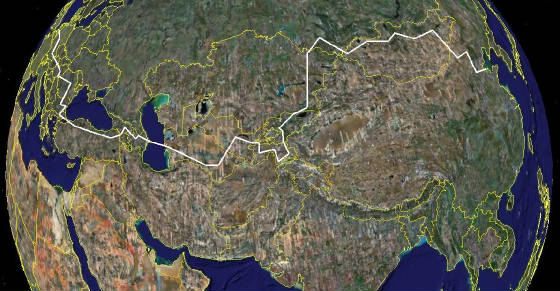
|
| Click on image for China |
Russia / Siberia
The
story of how we did NOT go there!
One
week before departure, and after our car had already been shipped to Europe, China closed its borders to vehicles entering
its Western borders. We were told by the Chinese that if we wanted to enter China we could
do so at the Mongolian/Chinese border, (Zamyn Uud/Erenhot) approximately 700 Kilometers (430 miles) north of Beijing.
Later, while in T’blisi,
Georgia, we would get word that Chinese decided to close all their border, including the one they had suggested we use for
entrance! We did not know it at this time. After
considering some alternatives, we decided to drive North from Almaty (Kazakhstan) to a corner of Siberia (Altai region of
Russia) in order to be able to enter Mongolia. We could not enter Mongolia directly from Kazakhstan.
No roads through those mountains and glaciers. Our
route would have taken us through a region of Kazakhstan very close to former Soviet nuclear blast test sites.
The nuclear fallout in this region has wreaked a long-term havoc with people, animals, and the environment.
Many children are born with deformities. Extremely high rates of cancer, miscarriage, etc.
So, we decided to be self sufficient with everything (water, food, etc.) and drive through this region as fast as possible
without stopping. Probably an overkill of planning, but better safe than sorry. Actually, we had two alternatives: Drive across Siberia, pass Irkutsk, and enter Mongolia
north of Ulaanbaatar (capital of Mongolia), or drive about 2-3 days in Altai region of Russia and enter Mongolia at the Northwest
corner. We decided on the latter route because 1. of the reported robberies and attacks on Siberian roads (this factor becomes
important consideration when you travel with your 12-year daughter). Reports (mostly on internet, and news
clips) of beatings and road hold-up were too numerous to ignore. 2.
Extremely
long lines at the Kyakhta Russia/Mongolia border (apparently the wait could be 2-3 days of sleeping in your car at the
border, according to Mongolian embassy in Washington, D.C.) 3.
Russian
border guards at the Kyakhta crossing have a reputation of extracting money and whatever they can take from you
at “exorbitant rates”. Russian border guards are generally known to be corrupt.
At some borders, you have to pay them bribes in order to cross borders. However, in this case,
the reported bribing had, reportedly, reached high-aggresive levels, especially when they detect “deep pockets”.
Americans are perceived as having “deep pockets”! So,
we rushed applications to the Russian consulate in San Francisco and received our visas within two days (at expedited rates).
One thing to remember: you need a “Letter of Invitation” from an organization recognized
and registered with Russia. Russian consulate will provide you a current list of such organization on the
phone. Little did we know at the time
that all this effort and planning would be wasted and the trip would not happen.
|
|
. M
O N G O L I A
. 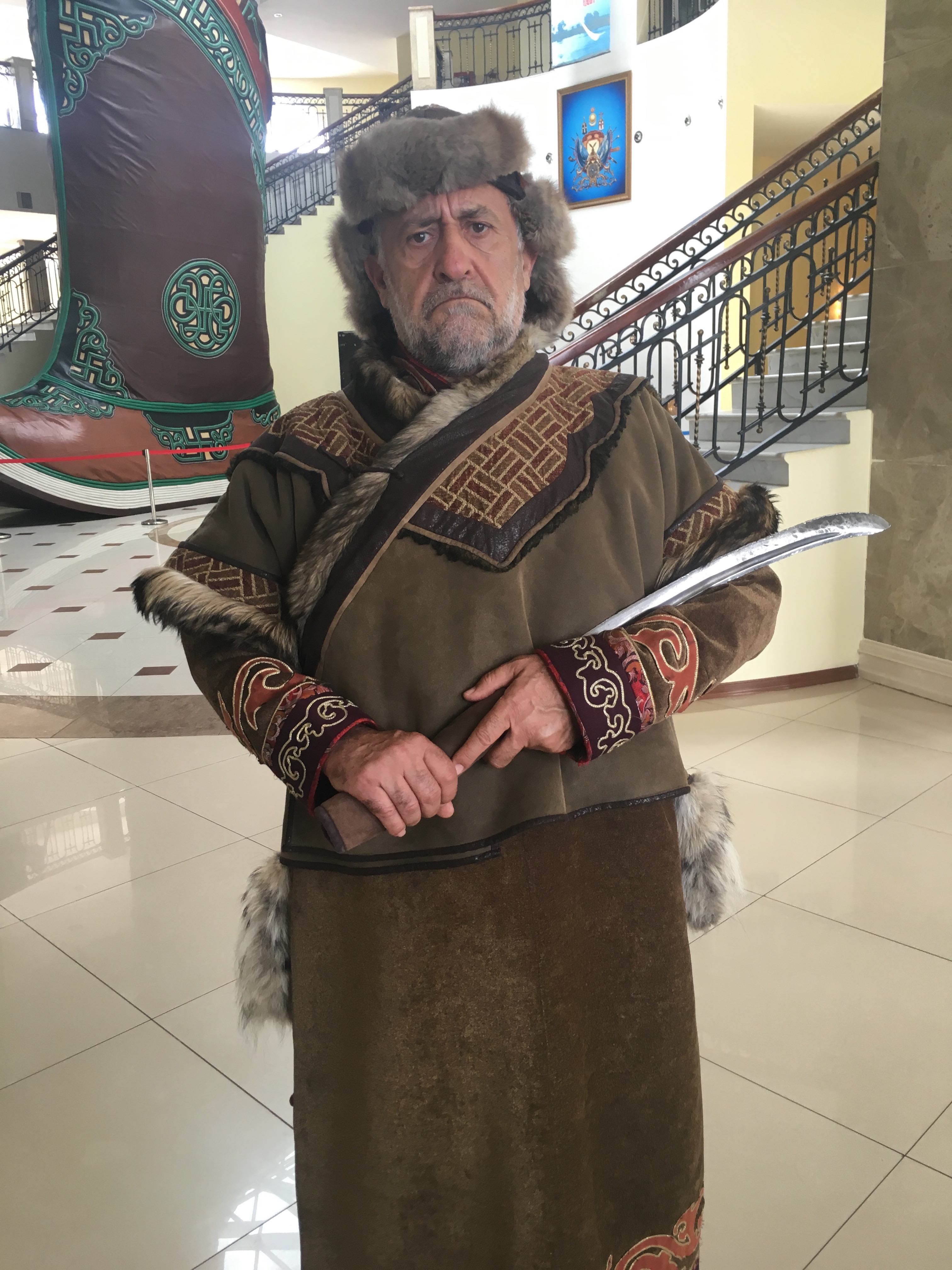
Finally,
above photo, Return to ancestoral land (??!!) in
2012. Below is the story of how we did NOT make it to Mongolia in our first attempt in 2008, and our subsequent
visit in 2012. The story of how we did NOT go there in 2008! (failed first attempt)
When we
received word that China would only allow us to enter at Mongolian Erenhot border (800 km north of Beijing), we had to quickly
re-plan our route. Our original route would have taken us across entire Chine in 18 days of driving.
The new route would include crossing Mongolia in its entirety West-East. Not knowing anything about Mongolia at this point, we started contacting people and researching
the country and its roads. Little did we know at the time
that all this effort would be in vain and the trip would not happen when, later, the Chinese suddenly closed all their land
borders! Three weeks of research resulted
in some interesting information and observations. Mongolian
Embassy in Washington said it would take 2-3 days to drive across Mongolia. Experienced guides, located
later, typically believed it would take 10-15 days! Apparently no one from the embassy had travelled
across their country, but they did not want to say “I don’t know”! We had to provide
a specific date to the Chinese for permission to enter. Hard to do! The Mongolian Embassy recommended taking the northern route across Mogolia, but the experienced
guides said absolutely not! It rains too much during summer and there is deep mud everywhere.
Needed a few 4x4 vehicles to assist eachother when you, inevitably, get stuck in the mud. We
decided on a more southern route. Mongolia
has very few roads. Mostly tracks. You need a good GPS and compass, and
maps to cross Mongolia. In many instances, you simply drive across Mongolian plains using navigation
similar to a ship in water! Provisioning is important,
obviously. It was
recommended that we hire an English-speaking guide and a mechanic. Vehicles breakdown frequently. We purchased
spare parts after consulting with many mechanics and dealers. After listening and writing / revising
the list of spare parts (consolidated recommendation of 3-4 mechanics with travel experience). It took a few months to
gradually order and pack the spare parts for the trip. For the Mongolian section, there was not anything special or
additonal which we obtained. It was a comprehensive list at a substantial cost! We had
enough spare parts to open a auto parts distribution shop! Our toolbox must have weighed a good 80 lbs (34 kg)!
From simple screw driver to sohisticated engine analyzer. You name it...Fuses, injectors, pumps, pulleys, belts,
glow plugs, etc. For medicine, the list is too long, but we had most essentials and
first-aid items with us. For medical emergencies, we had subscribed to air ambulance services. For example, in
the U.S., there is an organization called MedJet Plus whose coveregae was about $350 per year for a family of 3 people.
They come with an air ambulance and pick you up at the nearest airport or landing strip. We discussed our
situation with them prior to departure and were assured that they would come and pick us up at anyplace the airplane could
land. Fortunately, we had no occasion to test and learn if their promise holds true. Drinking water is important. We only needed 10 days supply for 3 people, which would have been
satisfied with bottled water. In addition we had special filteration, tablets, and good old "bleach"
for clensing. The best for us, however, was simply filtering and nightly boiling of the water. We
had plenty of propane and other fuels for boiling water. You can purchase multi-fuel burners from most camping
and outdoor stores. Fortunately our car is a 4x4
diesel vehicle with high-clearance. We also had complete camper facilities: kitchen,
refrigerator, 110 / 220 volt electricity. Four heavy duty batteries, 20 gallons (80 litres) internal fresh water tank.
External fuel and water tanks. With extra fuel, we estimated our range to be about 800 km at 10-15 mph, sufficient
to reach far away petrol stations. We also enjoyed convenience of air conditioning, hot and cold pressurized water for washing,
microwave, temperature controlled built-in space heaters, beds inside our camper/van, etc. For navigation we had paper maps, GPS, and compass. One
note: GPS maps proved almost impossible to find. One company, fugawa, allows you
to scan a paper map, then geo-code and calibrate the image to the readings of GPS coordinates. Thus, you
can create your own custom moving map. For communications, we had mobile and satellite phones. Both are
expensive. Actually, much to our surprise, satellite phones are less expensive than carrying a foreign
mobile phone. What we actually did was to carry two mobile cell phones. One had a permanent number
and intended for emergencies ($4+USD per minute), while for the other we purchased a local SIM chip at every new country.
Thus, we had our own national phone number at very affordable rates in each country. For satellite
phone, you can purchase bulk minutes at lower rates. In 2008, we could get $1/minute satellite rates by
purchasing 2000 minutes in advance. One problem with this is that the satellite phone company could
not tell us our current balance until two months after usage! Satellite phone is important because
cellular phone networks only cover the major cities. We also had walkie-talkies with 25 mile (38 km)
range. Finally we were ready to cross
Mongolian plains on our own. Except it did not happen! China closed all its
borders and we had to cancel. Little did we know at the time of planning that all our efforts
and time was being spent in vain. I would
have loved to cross Mongolia. Maybe another time!
Mongolia (continued, 2012) 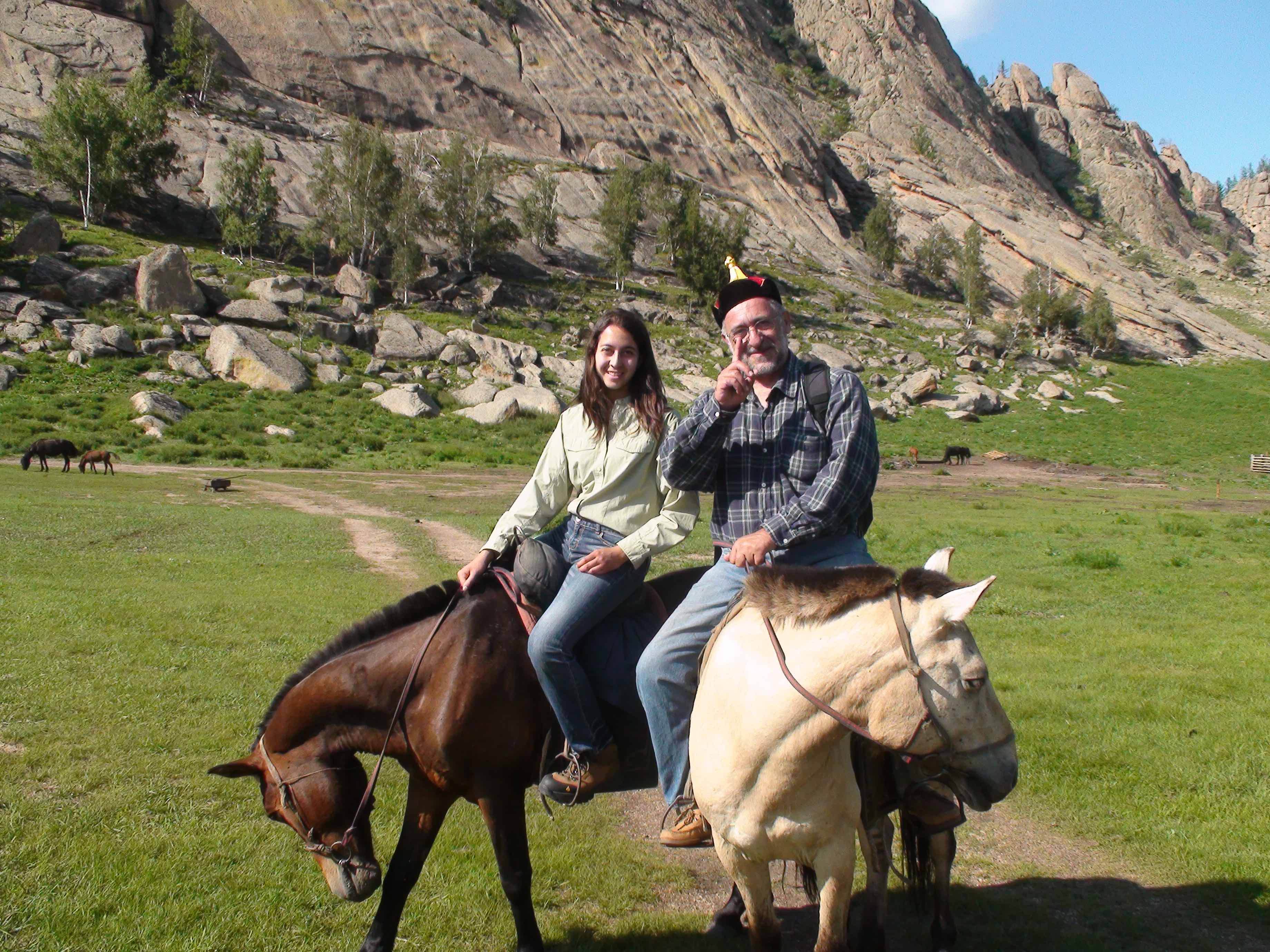 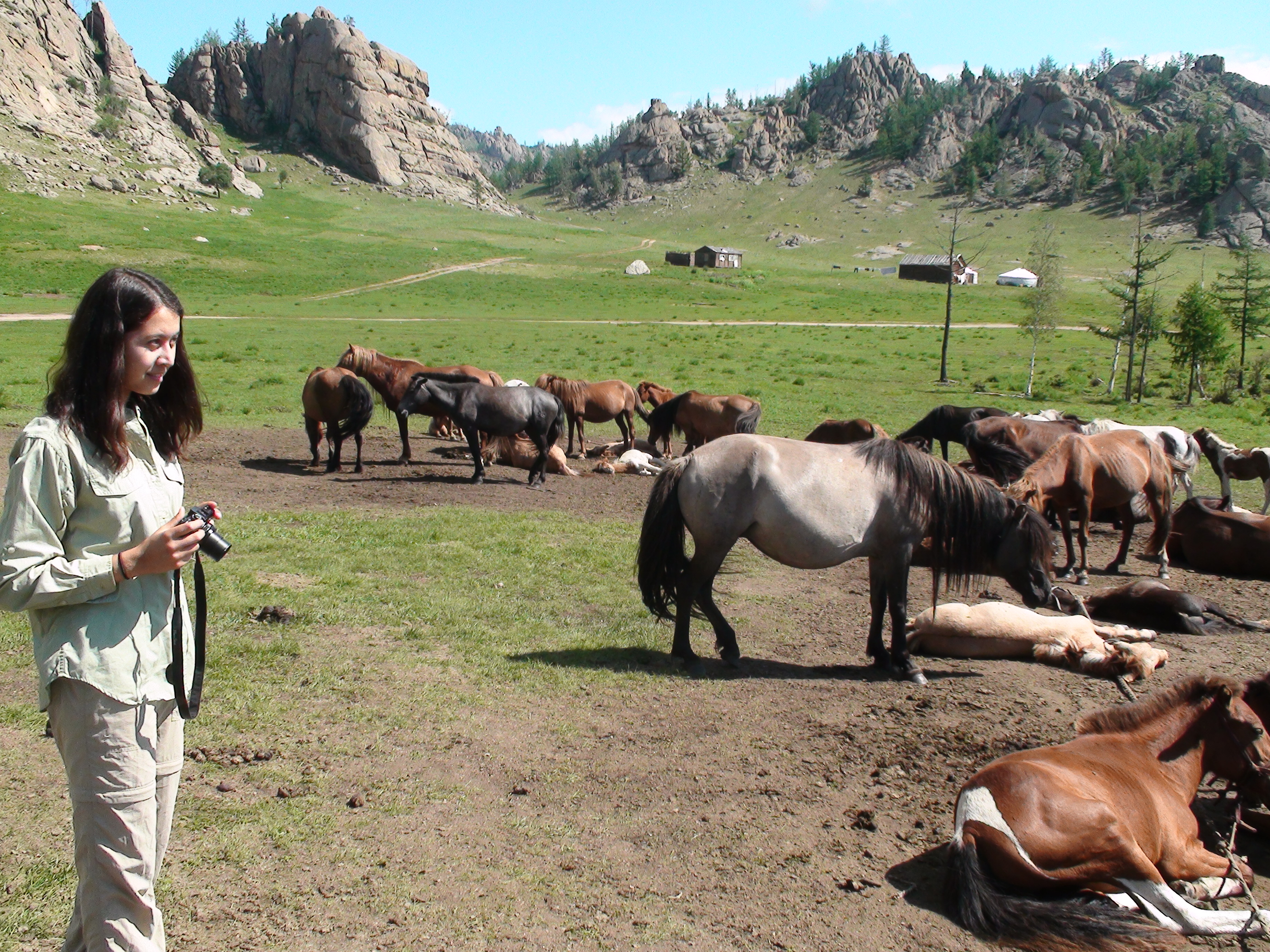
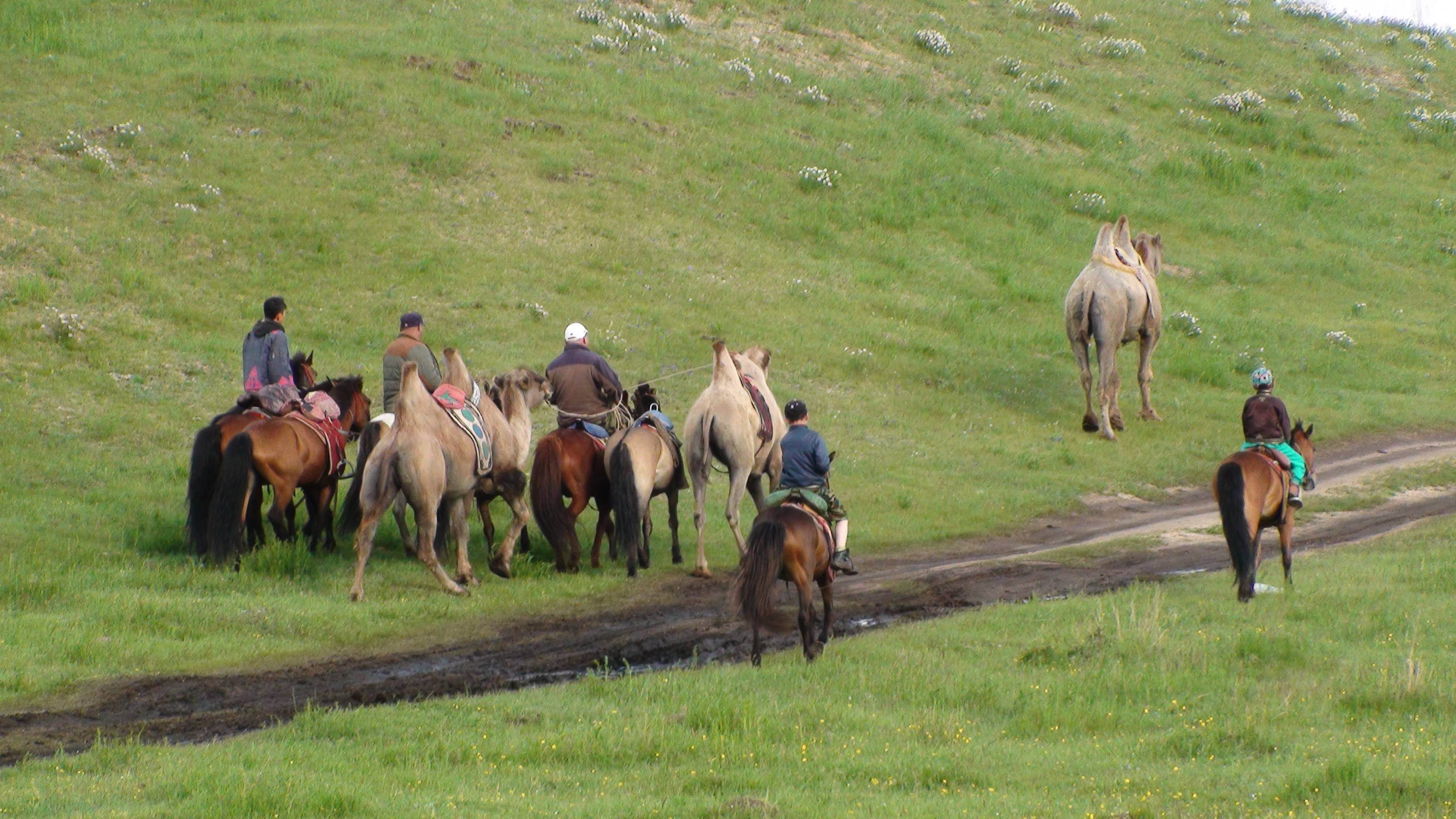 Well, we finally made it to Mongolia -- in 2012! This
was an unexpected short trip that combined business with tourism. When we were originally planning to visit Mongolia, I was told by the staff of the Mongolian embassy in Washington
that our family name was Mongolian! A total surprise! We had no idea. They insisted that we should go
to our ancestral land and visit Genshis Khan musuem in Ulaanbaatar (capital of Mongolia). That triggered a curiousity and strong urge to visit this land.
So, we eventually got a chance to do that in the summer of 2012 ... and yes, we got confirmation that our last name is indeed
of Mongolian origin! Apparently Jenghiz khan named his temporary capital south of present-day Tajikistan, "Talakan",
which is a common place name in Mongolia and present-day Siberia (an area that used to be part of Mongolia). In latin/English
alphabet, the name appears as Talakan, Taleqon, Taleghan, etc. With
my daughter, Leila, we arrived by plane from Los Angeles via Beijing on a Friday afternoon and were met by our friend/colleague
Gabit at the airport. This was early July and the weather was about 75 degrees farenheit (24 C) with clear skies. Ulaanbaatar has become one of the polluted cities in this part of the world. The summers
are not too bad, but apparently fall and especially winters have highly polluted air most of the time. Wood,
coal, and even tyre burning are still the source of winter heat and cooking for many who have moved to the city and live in
their traditional gers. Traditionally, Mongol herdsmen have setup
camp and lived in tents (gers). Custom dictates that each camp be setup far enough from another to allow the animal
herds, mostly sheep, sufficient grazing land. A typical local saying is, "if you can see the smoke from the
chimney of a neighboring ger you are too close"! That mean many kilometers distance between gers.
A balance in the ecosystem is maintained without overgrazing. Plus the camps move in seasonal migrations.
So, when people move to the cities, they are forced to setup their gers adjacent to eachother without any sanitation, water,
sewage, etc. You can imagine the rest! Plus, they use wood, coal, etc. for heating and cooking.
Not uncommon to burn tyres! Now imagine the pollution in a City of one million generated with burning of
coal, wood (if you can find it), and whatever else that burns. Horrendous! Visibilty is reduced
to "almost nothing". After a
short stop in Ulaanbaatar to exchange money we hired a taxi and drove two hours north of the City to Terelj National Park. Most of Mongolia is rolling plains. The north is more hilly and mountainous. This far north (close to Siberia), the summers do reach around 80's farenheit (27 C). The winters
get as cold as minus 40 degrees Celcius.
|